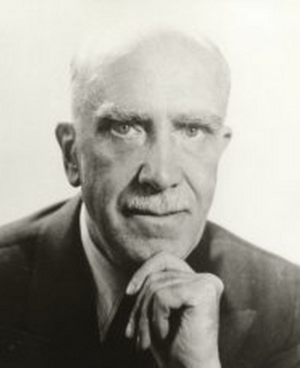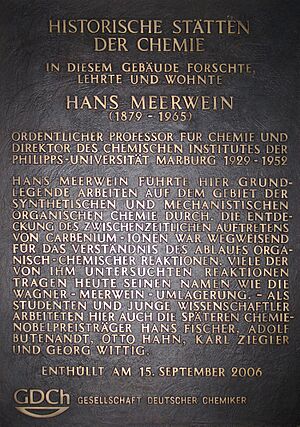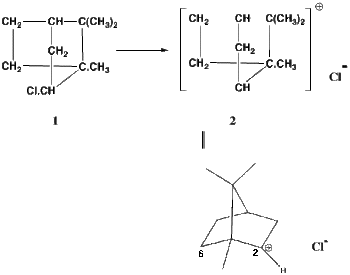Hans Meerwein facts for kids
Quick facts for kids
Hans Meerwein
|
|
|---|---|
 |
|
| Born | May 20, 1879 |
| Died | October 24, 1965 (aged 86) |
| Nationality | German |
| Alma mater | University of Bonn |
| Scientific career | |
| Fields | Organic chemistry |
| Institutions | University of Bonn, University of Königsberg, University of Marburg |
| Doctoral students | Georg Wittig |
Hans Meerwein (born May 20, 1879, in Hamburg, Germany – died October 24, 1965, in Marburg, Germany) was an important German chemist. He is famous for discovering new ways to make chemical reactions happen. Some of these reactions and special chemicals are even named after him. These include the Meerwein–Ponndorf–Verley reduction and Meerwein's salt.
Hans Meerwein's Life Story
Hans Meerwein's father, Wilhelm Emil Meerwein, was an architect. Hans first trained to be a chemistry technician from 1898 to 1900. After that, he decided to study chemistry at the University of Bonn.
He earned his PhD degree with a professor named Richard Anschütz. Then, he worked at the University of Berlin. Later, he returned to the University of Bonn and became a professor there in 1914.
From 1922 to 1928, he taught organic chemistry at the University of Königsberg. His last move was to the University of Marburg. During World War II, the chemistry building there was badly damaged. Meerwein helped plan its rebuilding, which was finished in 1953. That was the year he stopped lecturing, but he kept doing experiments with his team until he passed away in 1965.
His Big Discovery: Carbocations
Hans Meerwein made a huge impact on organic chemistry. He was the first to suggest that a special kind of molecule, called a carbocation, could exist. Carbocations are very reactive and important in many chemical changes.
He figured this out while studying how a chemical called isobornyl chloride changed. He showed that a carbocation was a key step in this change. This idea helped other scientists understand how many chemical reactions work.
Awards and Recognition
- 1959 Otto Hahn Prize for Chemistry and Physics



